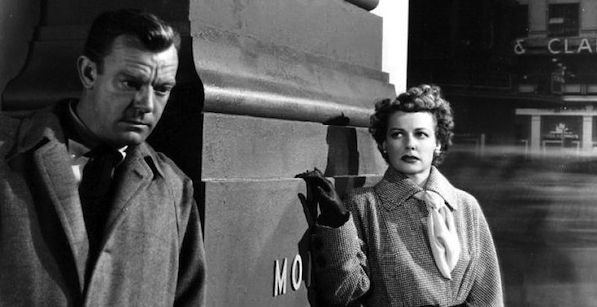
Film is a fragile medium, but a properly-preserved photographic image will last longer than the world it records. Moments pass. Actors and extras age and die. Studio sets are torn down. Even natural landscapes are shaped by erosion, development, de- and re-forestation, et cetera. Cities and towns used as authentic filming locations transform as their neighborhoods and landmarks do. In the last few years the city of San Francisco, where I live, has seen the disappearance of iconic cinematic spots like Jimmy Stewart’s Lombard Street apartment from Vertigo (remodeled to unrecognizability in 2012), The Cathedral Hill a.k.a. Jack Tar Hotel from The Conversation (demolished in 2013 and soon to be replaced by a hospital) and the span of the Bay Bridge upon which Dustin Hoffman drives in The Graduate (being dismantled as I write this).
Watching a classic film shot on location in a place you’re familiar with provides pleasures distinct from simply enjoying a well-constructed story enacted by compelling performers—although the two categories of delight can be entwined and build on each other. The feedback loop of setting reinforcing character, and vice versa, is a big part of what makes the film noir cycle particularly fascinating to urban moviegoers, especially when they feel a personal connection to one or the other.
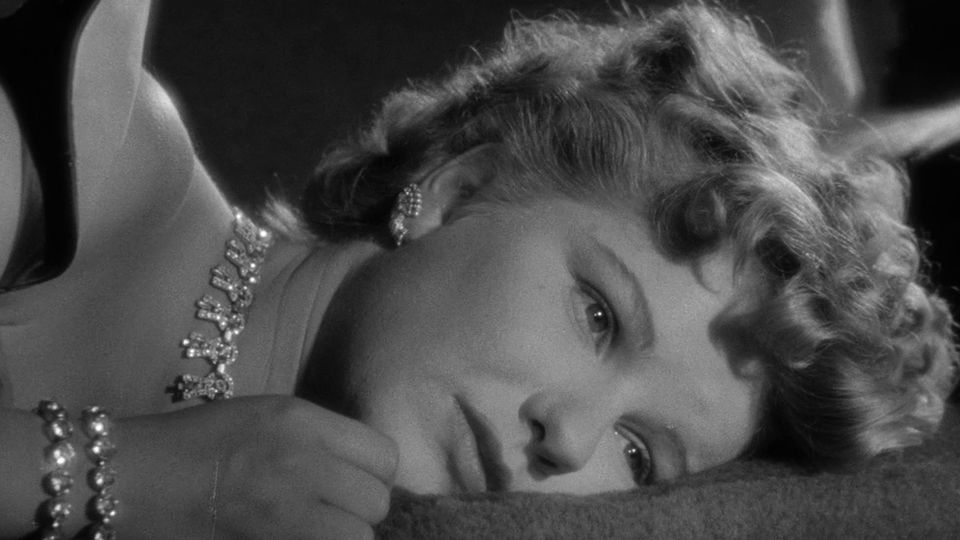
When in 2003 Eddie Muller and Anita Monga put together a collection of twenty different noir films, all made in and/or about San Francisco between 1941 (The Maltese Falcon) and 1962 (Experiment in Terror), it proved to be an unexpectedly well-attended event. Muller had been hosting annual festivals at the Egyptian Theatre in Hollywood since 1999, when that venue’s re-opening by the American Cinematheque coincided with the publication of his book Dark City: the Lost World of Film Noir. (He has since published several more on noir topics, most recently a delving into the Joseph H. Lewis jaw-dropper Gun Crazy). Nobody predicted that San Francisco audiences might pack the Castro Theatre (which has over twice the Egyptian’s capacity) to see a bunch of black-and-white crime movies, many of which screened regularly at the Castro or other nearby repertory venues like the Roxie. But nobody had collected so many 35mm prints of San Francisco noir to screen in such a short period of time before, either. Seeing their city reflected back a half-century later in classics like Dark Passage and Sudden Fear, or relative obscurities like Born to Kill or The Midnight Story, proved irresistible to audiences who came back again and again ten nights in a row. This launched San Francisco’s Noir City festival, which has since fanned out to cities across the U.S. (most recent addition: Kansas City) throughout the year, and has sprouted a non-profit film preservation arm called the Film Noir Foundation.
Though the themes of the flagship Noir City festivals at the Castro change from year to year (“Who’s Crazy Now?” featured mentally-unstable characters in 2011; the year before it was “Lust and Larceny”), Muller and Monga nearly always find room for one or two pieces of San Francisco noir, as if to hearken back to their 2003 partnership. The big exception: last year’s festival, which opened the door to international noir from places like France, Mexico, Japan and Argentina. So much globe-trotting left no time for a visit to Northern California. So it’s fitting that now, a year later, Noir City is set to launch its most San Francisco-centric program since 2003. No fewer than eight of the twenty-five films screening at the Castro over the next week-and-a-half have key scenes set and/or shot in San Francisco or Monterey.
Of course, the official theme of this year’s Noir City is actually “’Til Death Do Us Part: a Festival of Unholy Matrimony” and delves into mid-20th century cinematic depictions of troubled marriages. Like that of Robert Ryan and Barbara Bel Geddes in Max Ophuls’ 1949 masterpiece Caught, of Rock Hudson‘s and Frances Reid‘s in John Frankenheimer’s bizarre 1966 sci-fi/noir hybrid Seconds, or of Clara Calamai and Juan De Landa in Luchino Visconti‘s unauthorized 1943 James M. Cain adaptation Ossessione. (Yes, last year’s international noir edition has some crossovers in this Italian film paired with Henri-Georges Clouzot‘s Les Diabolique, and in a double bill of British noir films directed by McCarthyism exiles Edward Dmytryk and Joseph Losey.) It’s another bold program from a team that likes to stretch its aficionado audience’s preconceptions of what noir means precisely; in 2014 Muller and Monga showed how it’s not as uniquely American as some have claimed; in 2015 we may find it doesn’t always contain all the hallmarks we thought it did. Though there’s plenty of emotional violence packed into the selected films, some of them contain little or no physical violence in them at all. Rarer too are certain typical character types we’re used to seeing in standard noir: gumshoes, gangsters, police officers, etc. By focusing in on the ethical and existential frailties of that most private of institutions, the marriage, Noir City 13 may be masking out some of the trappings of wider society we expect in tales of opportunists, chauvinists and double-crossers. I suspect most viewers won’t miss the usual tropes once they see a few films that expose wedlock to be a lot like going on the lam with someone you’re not so sure you can trust.
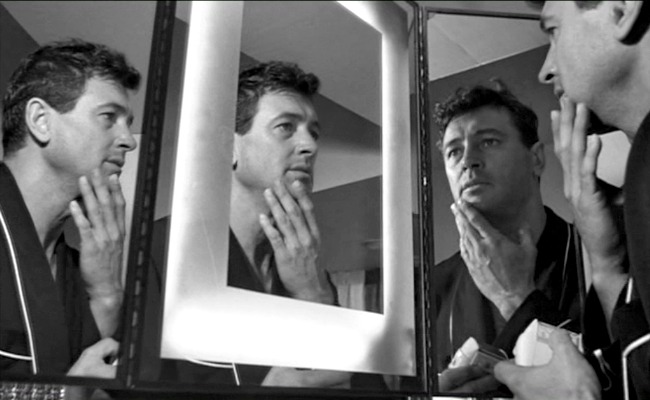
Why so many San Francisco films in a series of marital noir? For starters, this city was a popular location for urban-set films of any kind, as it was in much closer range for a traveling crew than New York or Chicago. As I wrote in an essay on film noir published in the 2013 book World Film Locations: San Francisco, “With Los Angeles building height limits in effect until 1956, San Francisco was the only West Coast city during the classic noir era with enough structures over 150 feet high to evoke the claustrophobia of a modern city’s towering corridors. What’s more, its skyscrapers have a socio-geographic mirror in the famous hills the city is built upon and between. At the top of both we find socialites and captains of industry; at the bottom, proletariat slum denizens and wharf rats.”
Some of the best films shot in San Francisco treat its unique spatial dynamics as a kind of character itself. The opening film of Noir City 13, Woman on the Run, employs setting to make the most of a rather minimal story. Ann Sheridan plays the hard-boiled spouse of a failed artist who has gone into hiding after witnessing a murder. She attempts to track him down using old sketchbooks of neighborhood inhabitants as clues to his whereabouts, while trying to evade detectives and newspapermen trying to get to him first. If her wanderings across city hills into various dives feel particularly authentic to San Francisco’s character, perhaps it’s because the cinematographer was a native son, Hal Mohr, who’d filmed extensively here. (His credits include the notorious The Last Night of the Barbary Coast for Sol Lesser in 1913.) Director Norman Foster, best known for his collaborations with Orson Welles, had also made his transition from actor to director in a 1936 San Francisco film called I Cover Chinatown. Woman on the Run is a completely unpretentious, excellent thriller and a genuine Noir City discovery making its long-awaited reappearance at the festival after the last copy was thought destroyed in the 2008 Universal Studios fire. The Film Noir Foundation has funded a 35mm restoration which will premiere Friday night, followed by a video comparing its 1950 locations to their counterparts today, put together by Brian Hollins of the essential Reel SF website. On top of all that, Ann Sheridan’s centennial is right around the corner in February.
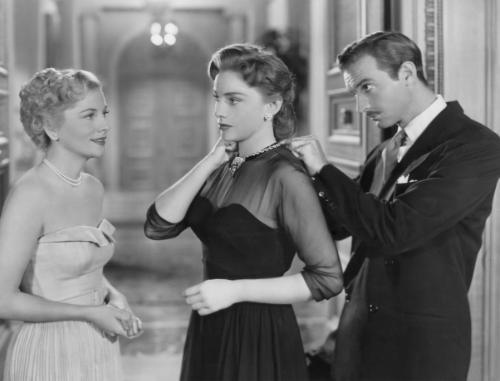
Though a killing or a bank robbery can take place in any neighborhood, it’s not just anywhere that a woman can meet a rich husband. Ill-gotten gains were coded by gender in many 1950s films; a gold-digger was the distaff equivalent to a man who embezzled or defrauded in the course of his workday. Born to Be Bad is not one of the best films directed by Nicholas Ray, but it’s worth viewing as a prime example of the kind of film that required a San Francisco setting even if nothing was shot here beyond the interstitial views from Nob and Telegraph Hill that establish scene transitions. Joan Fontaine plays a clearly duplicitous conniver from her opening moments; she arrives in San Francisco from a fictional small town ostensibly to work for her rich uncle, but immediately sets her sights on her host Joan Leslie‘s insanely wealthy fiancee, Zachary Scott. But then a Hemingway-esque novelist played by Robert Ryan walks in the door, as if a plot device to erase any doubt about the inauthenticity of Fontaine’s seduction of Scott’s hapless high roller. The cast, also including Mel Ferrer as an apparently asexual (read: gay) painter, rises above the material to make the relationships work; indeed what puts the film over is its collision of plausibly San Francisco characters: old-money playboy, world-traveling author, etc. “Born to Be Bad” turns out to be a misnomer, however; revelations about its anti-heroine’s childhood point to the 1973 Carol Burnett Show spoof “Raised to Be Rotten” as a more accurate title for its inspiration.
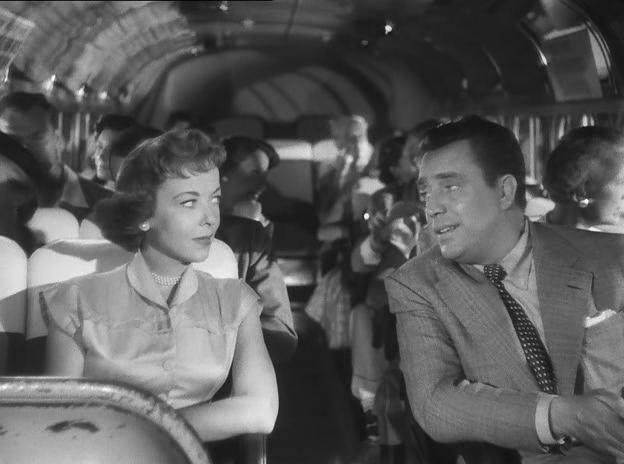
Fontaine plays a far more sympathetic corner of a teetering triangle in Ida Lupino‘s 1953 The Bigamist. Here she’s the go-getter wife of a schlumpy traveling salesmen (Edmund O’Brien) with a secret telegraphed by the film’s title. Lupino plays the more working-class other woman, directing herself for the first time, excepting cameos and her rumored fill-in for several scenes of On Dangerous Ground when Nick Ray fell ill. Contrasting with Lupino’s previous directing gig The Hitch-Hiker, there is no true villain in The Bigamist, only a tragic situation; Luipino and screenwriter Collier Young impart audience empathy for each character. Fontaine’s home base is a San Francisco highrise apartment, but her working-woman ambition is born not out of avarice but out of distraction caused by her inability to be a mother. Meanwhile Lupino is trapped taking Chop Suey orders in L.A.’s Chinatown until she makes an unexpected connection with lonely, road-weary O’Brien. There’s a good deal of location shooting in The Bigamist, but it’s all in support of the Southern half of the story. Confining the San Francisco scenes to claustrophobic rooms while letting O’Brien’s courtship of Lupino breathe in the open air of Los Angeles streets and parks helps make even the title character earn audience understanding, if not endorsement.
Crime of Passion also splits its time between San Francisco and Los Angeles, but in this case the San Francisco scenes are an energetic twenty-minute prelude to a kind of stultifying suburban conformity that Barbara Stanwyck aches to break out of. Like the cable car clattering down California Street in the opening shot, she faces a steep decline. She starts as a popular newspaper columnist with plenty of talent and plenty more contempt for male authority—whether in the form of her unappreciative editor or a policeman up from L.A on a fugitive case she outsmarts him to crack. But she can’t resist lingering on his partner Sterling Hayden, for whom she ultimately decides to become a housewife. Big mistake. The milieu of police wives parroting each others’ speech and mannerisms is enough to drive a San Francisco career girl out of her mind! (Compare against the diversity of her former readers, including a lesbian couple that surely didn’t go unnoticed in 1957.) Stanwyck begins concocting dangerous ways to play leapfrog on the social ladder and soon encounters the only man on the force who’s got her number: Raymond Burr. Crime Of Passion is an underrated gem directed by German emigre Gerd Oswald, whose few feature films (also including A Kiss Before Dying) exhibit a brutal combination of his silent film director father Richard’s social conscience and the cynicism of one of his best-known Hollywood mentors, Billy Wilder.
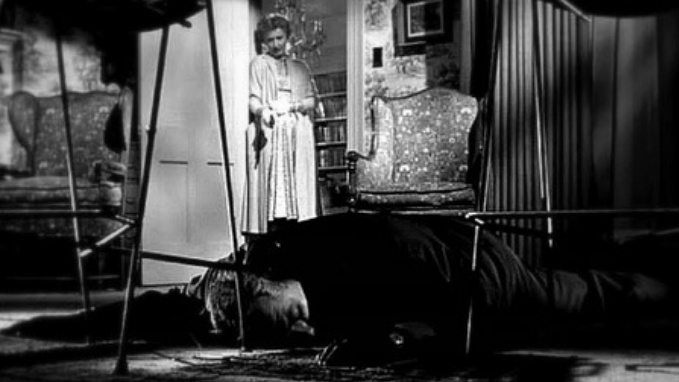
After the Thin Man is hardly film noir, but it is a detective story based on Dashiell Hammett characters and, unlike most of the six films in the series (they didn’t normally say “franchise” in the 1930s), it includes some great San Francisco location photography, such as a homecoming drive down Market Street where we learn from just how different the two worlds are where Myrna Loy’s Nora and and William Powell‘s Nick come from. Presumably it and its predecessor are included in this year’s “Festival of Unholy Matrimony” because audiences would be demoralized by too much wedded negativity without a day featuring a married couple for whom “on the rocks” describes only their drinks.
Last on my list of San Francisco-set Noir City 13 selections is Julie, a Doris Day vehicle screening as part of a triple-bill tribute to mated filmmakers Andrew and Virginia Stone. Day plays a flight attendant worried that her new husband (Louis Jordan) might have done away with her previous one, and even more worried that if he finds out she knows, she’ll be next. I’m not sure how much of the film was actually filmed in San Francisco other than the climactic scenes using the newly-built control tower at the San Francisco Airport (technically in San Mateo County, not SF), though I know the fancy hotel Julie (Day) checks into is actually the Los Angeles Statler (now demolished and soon to be the site of California’s tallest skyscraper) standing in. But the first few reels of the picture make good use of another Northern California peninsula with an even longer history of European development: Monterey. The opening scene is a rubber-burning ride down the winding roads of nearby Pebble Beach, and later shots were taken in Carmel and Monterey, including a key moment in historic Colton Hall. Though not nearly as tightly-wound as the other thriller Doris Day released in 1956 (The Man Who Knew Too Much, naturally) it’s an engaging picture and it introduced the star to the region where she’s now resided for over forty years.

One wonders if Alfred Hitchcock advised Day about Monterey before she filmed Julie there; he certainly knew the area himself. The Scotts Valley estate he’d purchased in 1940 overlooked Monterey Bay from miles above, and he’d filmed scenes for both Rebecca and Suspicion just south of the peninsula. In Suspicion, another Noir City 13 pick featuring Joan Fontaine, perilous Big Sur cliffs stood in for coastal England in the scene where Fontaine investigates a site where her deceitful husband (Cary Grant) has taken cheerful investor in a potential real-estate venture to inspect—or is it to be murdered? No series of marriage-themed films could be complete without an example of Hitchcock, who returned to the subject repeatedly throughout his career, and with Fontaine’s passing still just over a year ago, now’s the right time for a Noir City tribute. In addition to Born to Be Bad, Suspicion and The Bigamist, the festival will screen Sam Wood‘s 1947 Ivy, which presumably contains no Northern California scenes.
As far as I know the only other Northern California Noir City 13 film is Clash by Night, Fritz Lang‘s 1952 melodrama starring Stanwyck, Ryan, Paul Douglas and Marilyn Monroe. Like Julie and Suspicion, it utilizes studio sets and Monterey County locations, but unlike them it’s steeped in the traditional lore built up around the county’s namesake city by its association with John Steinbeck. Though the Clifford Odets play was set on Staten Island, it was decided to shift the movie to the fishing community that would in a few years be officially renamed Cannery Row in honor of Steinbeck’s 1945 novel. The truth was, by 1952 overfishing had already made the canneries a shadow of their mid-1940s selves. Maybe nobody even minded when one chute loader intentionally halted his packing line with a can-jam so his fellow workers could watch Monroe being filmed outside the cannery window.
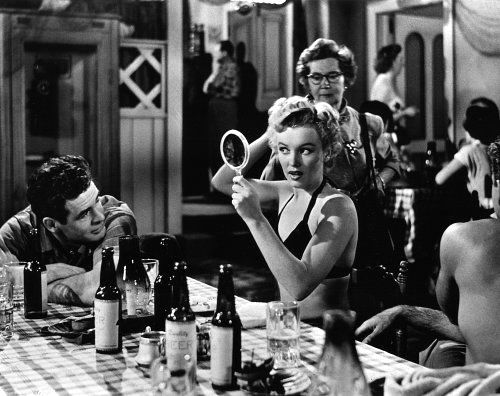
Still, Fritz Lang and cinematographer Nicholas Musuraca were able to capture a great deal of documentary footage of what remained of the sardine industry before the cast arrived. This was cut together with elemental shots from Slavko Vorkapich‘s 1941 experimental film Moods of the Sea (most likely filmed nearer to La Jolla than Monterey) into a uniquely beautiful, wordless prologue that was frequently excised from television broadcasts of Clash by Night. Perhaps that’s one reason for this gut-wrencher’s strangely shaky reputation amidst Lang’s filmography. The plot, in which Stanwyck’s Mae Doyle returns to her hometown defeated by the wider world, and promptly settles into wedlock with a man (Douglas) she knows can provide security but not passion, depends on a real sense of the commercial monoculture at the heart of this town. Just about everyone is connected to fishing. Mae’s little brother works on the same boat as her husband, and dates one of the cannery girls (Monroe). Only Ryan, the town’s movie projectionist, stands apart, like a conspicuous vial of morphine on a shelf full of cod liver oil. Which would you take if you weren’t feeling so good?
Though Northern California noir fans will find themselves pretty busy over the next ten days, they needn’t worry about Noir City running out of more such titles to screen. A flip through Nathaniel Rich’s handy San Francisco Noir book shows a plethora of titles not yet shown by Muller and Monga at the Castro: The House Across the Bay, This Gun for Hire, Undercurrent, Blonde Ice, Impact, Treasure of Monte Cristo, Chinatown at Midnight, City on a Hunt… I could go on. Then there are the films that haven’t been shown in a decade or longer, like Shadow of a Woman, Lady from Shanghai and I Want to Live. Titles not mentioned in Rich’s book, like Fallen Angel, Shock, and of course Hell on Frisco Bay, which I long to see on a cinema marquee one day (it’s the film I named my blog after in 2005). I suspect that as long as there are people lining up at the box office and films being rediscovered in the world’s archives, we’ll have a festival like Noir City to match them.



